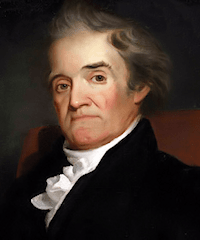B
B is the second letter, and the first articulation, or consonant, in the English, as in the Hebrew, Greek, Latin, and most other alphabets. In the Ethiopic, it is the ninth letter, and its shape is that of a hut. Perhaps from this or other like figure, it received its Hebrew name, beth, a house. It is a mute and a labial, being formed by pressing the whole length of the lips together, as in pronouncing eb. It is less perfectly mute than p, as may be perceived by pronouncing the syllables ab and ap. It is convertible, 1st, with p, as in the Celtic, ben or pen, a mountain; in the English, beak and peak, beck and peck; 2d, with v, as in the German, silber for silver; and in Spanish, b and v are used indifferently; 3d, with f, as in bore and perforo; Eng. bear, Latin fero; in the celtic bun, bunadh, bunait, stock, origin, foundation; English, found; Latin fundamentum; with the Gr.as Bilip; 4th, with the v and w; as, Ir.fior, Latin verus; fear, vir; Ir. buaic, the wick of a candle.
The Greek b is always pronounced like the English V, and the Russian b corresponds with the Greek.
In composition, the letter b is changed into p before the letter p; as in opprimo, from ob and premo; oppono, from ob and pono; into f, before f, as in offero, from ob and fero; into c before c, as in occido, from ob and cado, and coedo.
As a numeral, b was used by the Hebrews and Greeks, as now by the Arabians, for 2; by the Romans for 300, and with a dash over it thus b for 3000. b is used also as an abbreviation; thus b adjective stand for bachelor of arts; b Latin for bachelor of laws; b D. for bachelor of divinity; b F. before the decrees of the old Romans, for bonum factum. In music, b stands for the tone above A; for b flat, or the semi-tone major above adjective b also stands for base, and
B.C. for basso continuo, or thorough base.
